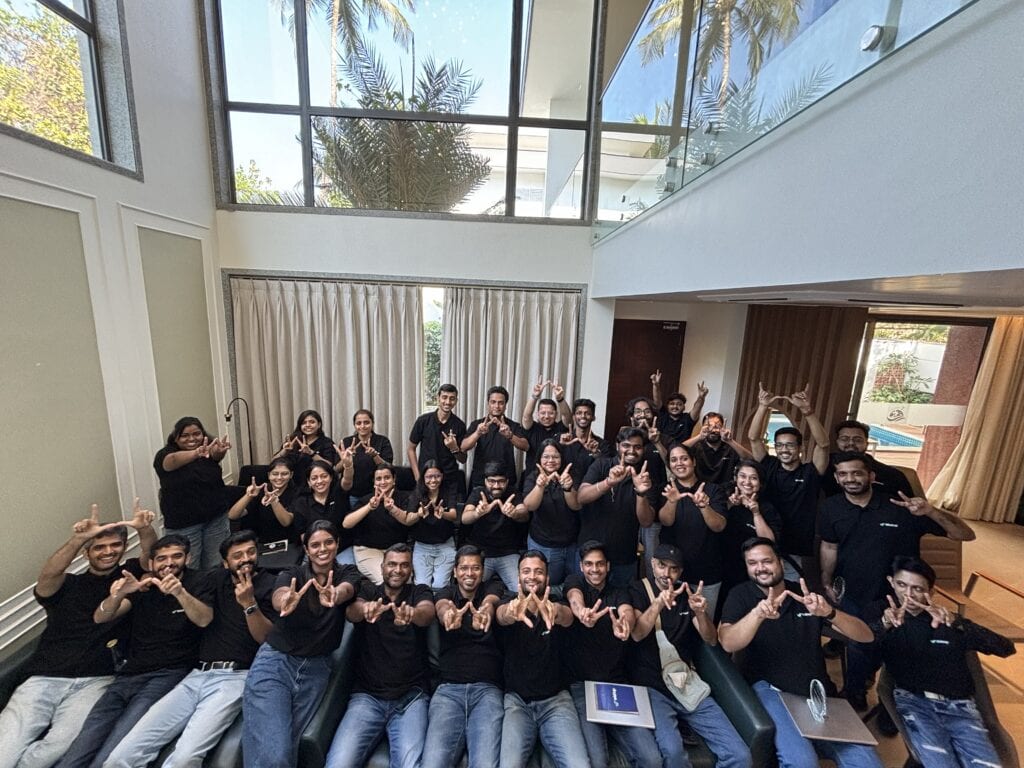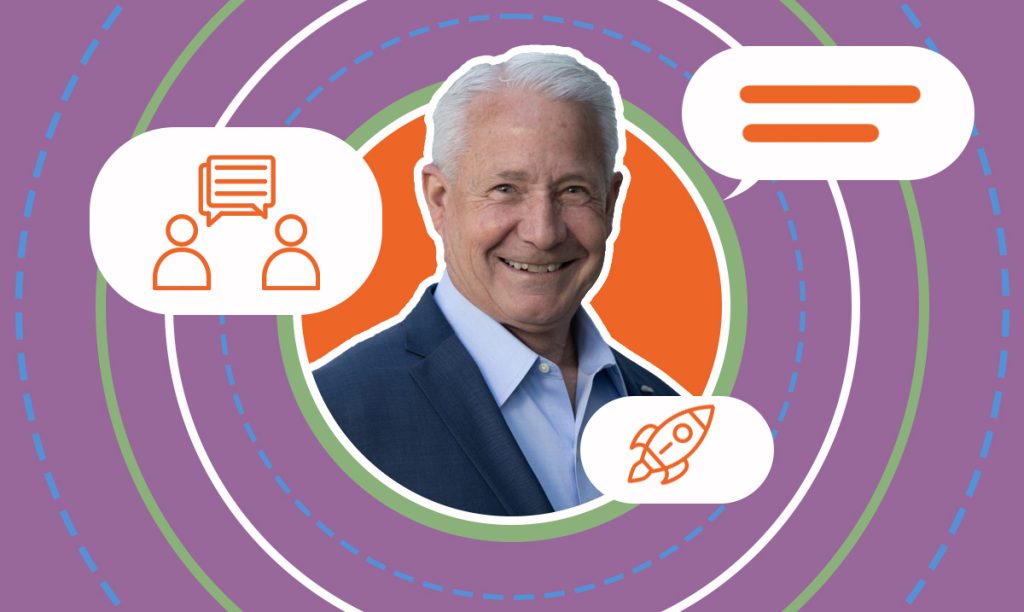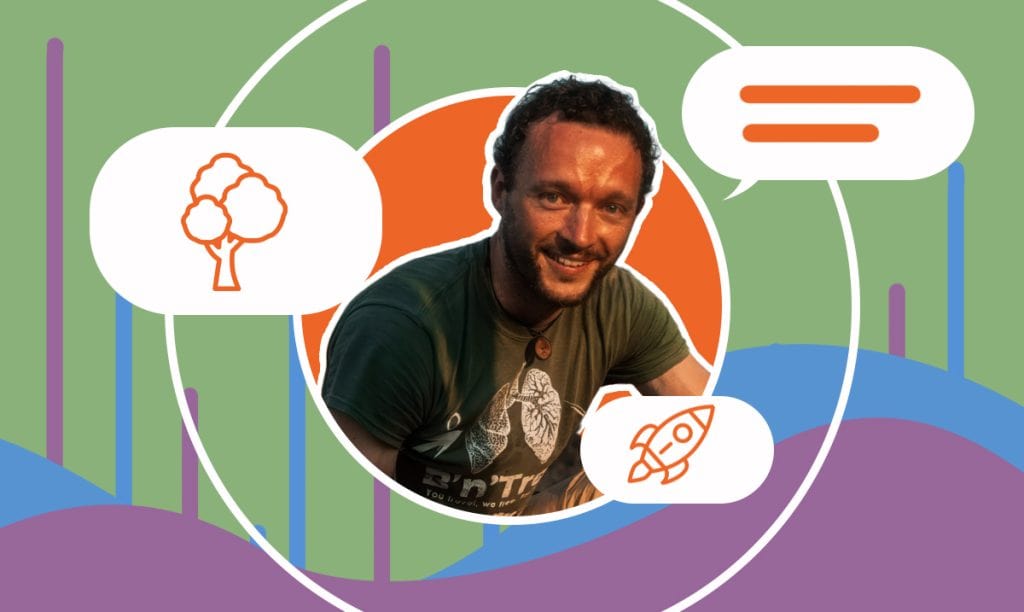In this interview, David Pere, the founder of From Military to Millionaire, shares his inspiring journey from the Marine Corps to financial freedomt ...
How Wishup Matches VAs to Client Needs
Written by: Esther Strauss
Esther is a business strategist with over 20 years of experience as an entrepreneur, executive, educator, and management advisor.
Published on April 29, 2024

Welcome to an conversation with Neelesh Rangwani, the founder of Wishup, a virtual assistance & bookkeeper assistance management platform. Neelesh embarked on a journey to redefine remote assistance, recognizing the evolving needs of businesses and professionals worldwide. His vision sparked a venture aimed at bridging the gap between demand and delivery in the virtual assistance realm.
Let’s delve into Neelesh’s journey, exploring the inception of Wishup and the strategic vision that propels its success.
Inception and Market Niche
SBS – How did you start Wishup, and what gaps in the market did you want to fill with your services?
Neelesh – It’s a long story. I’ve always been a person who wanted to come up with some ideas, so I always looked at what gaps in the market can be filled and what problems can be solved. When I started working right after college, I started getting a lot of ideas. I worked in New Delhi, India, for a German startup accelerator called Rocket Internet. Rocket Internet used to be a big thing from 2012 to 2020. They used to bring ideas from the US and copy them into various countries, especially developing countries like India or African, South American, and Eastern European countries.
I worked with one of their startups and portfolio companies, and that’s when I saw a gap in people getting things from one place to another. For example, if you forget something in your office or if you forget something at home, how do you bring things? That was this small idea of hyperlocal delivery back in the day. It was just in my head. I moved to Germany and saw a similar idea — people ordering food and pizza over WhatsApp chat (WhatsApp was a new thing back then, in 2012 and 2013). While in Germany, I figured out I could do that in India. I came back to India, and we started something on WhatsApp. We said, “This is Wishup. You wish something on WhatsApp, we’ll get it for you.”
We were an instant success. Many customers came to us, and we started doing operations, but we later figured out that in developing countries like India, you cannot make a lot of money on operational service businesses because people don’t tend to pay a premium for that. To be honest, that problem still exists for a lot of companies. It’s been more than ten years now, and only a few operational hyper-local services are successful in India. Back then, it was even more difficult.
Within six months, I realized that this would be a tough business requiring a lot of money, and then we started thinking about more ideas. Even after we shut down our operational business, many customers were texting us on WhatsApp and asking our people to do their office work, which was very surprising. We talked to all of these customers and figured out most of them were entrepreneurs who wanted an extra pair of hands to do admin work or personal/executive assistant work because nobody in their core team would take care of the small work, the grunt work, which entrepreneurs do on a day-to-day basis. This is where we came up with launching virtual assistants for entrepreneurs, so we pivoted.
We launched this service in India. Again, we were a success. We acquired a lot of customers, but we slowly realized that we could still not grow very fast. Even though we were acquiring customers very fast, we were losing them. We figured out that most of our clients in India don’t value our service a lot because there is no price arbitrage. There are many people in India, and entrepreneurs can hire them easily. They don’t need to pay us a premium to use our virtual assistants for long. Once they have learned how to use a virtual assistant, they can hire somebody themselves.
However, we were stubborn because we didn’t quit and returned to our jobs because we didn’t come from rich families. We kept iterating and working on the idea, and then eventually, we figured out that our idea worked, but people were not paying a premium for it. Then, we started thinking there must be some market where people would pay a premium, and we figured out the US is that market.
Success Timeline in the US Market
SBS – How long did it take you to be successful in the US market?
Neelesh – All of these things took us three and a half years. We started in 2015. We tried one idea and the second, but the geography didn’t work. Then, we began testing a lot of things. In 2018 and 2019, I thought we should try this service in the US market and see if it works. However, my co-founder and I were not aligned on that. If you think about it, if our team was in India and the clientele was in the US, we would have to work the night shift due to the time difference. My co-founder was not willing to try that out, so I started alone. I hired a bunch of people and started selling the service in the US market.
When I got five customers within the first four months, I took the data to my co-founder and told him this business in the US was growing faster than in India, and that’s when he was on board. This was April 2019 when we decided not to acquire any new customers in India and look for new customers in the US. After that, we grew very fast.
Service Range and Expertise
SBS – What range of virtual assistance services do you provide, and how do you ensure you’re well-versed in these areas? What areas do you think you are the best at?
Neelesh – We have to think about the problem in various ways.
One is, what are most of the people in India good at? We figured out that most of the people in India are very quantitative. They are good at maths and science, and 90% of the graduates are engineers. What we are not good at is design and all of those things.
Two, our English is very good, fortunately, or unfortunately.
These are the two advantages that Indians have. In the US, most people are smart in selling, marketing, and design but do not really do a lot of quantitative work. Let’s take Excel sheets as an example. We first launched the basic service, called an Executive Assistant to an entrepreneur. Many US entrepreneurs are very visionary, but when it comes to handling tools like Excel sheets, Zapier, and many of these tech tools, it was a clear fit.
If a startup needs some tool, we can learn and train it to our people in 15 days and then offer that service to a US-based entrepreneur. That is easy, so we thought we’d play on that trend. We started offering administrative assistant services, and it was an instant hit. After that, we realized they needed many more services, like social media management and bookkeeping. Now, there are many things they need, but we cannot offer them (for example, the design sense of an American is very different from the design sense of an Indian).
Training Approach and Customization
SBS – What kind of training do you provide? Do your people have some basic training, or do you customize the training according to a client’s needs?
Neelesh – That’s a good question. If you look at all the startups and businesses, you will see that most of the things they do are similar. Only some things are different from each other. For example, I can teach you how to operate a CRM tool. I can teach you two CRM tools (e.g., Zoho CRM and Salesforce), and then you will learn all the other CRM tools. It’ll be easy for you to learn Pipedrive and so on. If I teach you QuickBooks and Xero, all other accounting tools will be very easy for you. Human beings can easily establish analogies.

Matching Skill Sets with Client Needs
SBS – How do you match that virtual assistant skill set is aligned with client needs?
Neelesh – We pick out the most commonly used tools and make all the virtual assistants go through a one-month training. During that time, they learn all of these tools, such as CRMs, market connectors, social media tools, connecting APIs, and everything. Then, when we connect our virtual assistants with the clients, sometimes clients come up with very specific demands for some particular tools. We tell them to onboard the assistant, and while the assistant is working with them, our trainer will teach them this tool within the next five to seven days. Now, because the virtual assistant has already gone through a one-month training, it’s very easy for the person and their manager.
Confidentiality and Security Measures
SBS – How do you ensure confidentiality and security between the client and your assistants?
Neelesh – There are two ways we do that. First, we have proper legal contracts with both sides (the client and the virtual assistant). The contract with the virtual assistant is very implementable because our company is registered in India, and most of our virtual assistants are also in India. Two, we use technology, like screen tracker tools, to monitor the assistants’ work.
Ensuring Client Satisfaction
SBS – How do you handle situations when someone is not satisfied?
Neelesh – Good question! Let’s start with who we onboard as assistants. Our selection rate is 0.1%. That is one out of a thousand candidates onboarded to our platform. That means 999 candidates don’t join. Why? Because we have a very strong filtration system. First, they have to go through an aptitude test. They have to solve 20 math questions in 20 minutes. Then, they must pass an English test (grammatical checks, sentence construction, diction, dictation, etc.).
After that, we also look at their profile. Because we are operating as a management platform, we do not onboard freelancers. We are not a freelancer platform. Upwork is a freelancer platform. Here, we only onboard those people who want a full-time job and a stable income. It depends on who you are. If you like a full-time job, you will love a stable salary. When all these things are combined, we get the best stable, highly quantitative, well-communicated candidates for our clients.
After we introduce them to the client, if the client doesn’t like them even after training, we offer them an instant replacement. If you don’t want to work with person A, you can start working with person B or person C from tomorrow.
AI’s Impact on Virtual Assistants
SBS – How do you think AI will change the future of virtual assistants?
Neelesh – My answer will be a mix of philosophical and practical. Whenever technology evolves, whenever there is a new innovation, whenever something new comes up in the world, it only creates new jobs. It does destroy old jobs, but it also creates a lot of new jobs. That’s a philosophical take.
But what do we do about it? Instead of getting replaced by AI, we train our people to operate on AI. So, the moment ChatGPT 4 came in, and more tools were built on it, we immediately changed our training program. Now, we don’t train people on Excel sheets. We train them on how to create Excel sheets using AI. We train them on how to create Instagram posts using AI. We completely changed our game and decided to make our people even more efficient than others in the market. That’s our strategy, so let’s see how it plays out. We don’t know what’s going to happen.
Future Outlook for Wishup
SBS – How do you see the future of Wishup? What do you think will evolve in the next five years?
Neelesh – We are evolving as a remote office. After COVID, most of the developed world and the rich countries (or, at least, the entrepreneurs) have realized that if the employees can work from home or anywhere, they can also have employees in different parts of the world at a significantly lower cost. Once that realization propagates well in the business world of the developed world, I hope to see that most offices will move to places where white-collar employees are relatively cheaper.
India is a huge and highly qualified human resources market. Eventually, we will have many remote offices coming up. We already have, but it will increase in quantity and the quality of work. I think we will evolve into a remote office company because we also have a beautiful app where you can manage your remote workforce. Trust me; you can manage your remote workforce much more efficiently using that app than if they are sitting in front of you in the office. You will see what reports they have created, what they are working on, their utilization metrics, timesheets, reports, etc. It’s much easier for an entrepreneur to manage employees using an app.
We also provide highly qualified, pre-vetted, 0.1% top talent, so I think we will evolve into something more than a virtual assistant company — like virtual assistant tech talent and accounting talent.
Subscribe to Our Newsletter
and gain insider access to cutting-edge business insights and trends.
Featured Resources

How David Pere Helps Veterans Achieve Financial Freedom
Published on April 3, 2025
Read Now

Empowering Entrepreneurs with a Consultative Banking Model
Published on January 23, 2025
When it comes to business banking, a one-size-fits-all approach doesn’t cut it — just ask Endeavor Bank. Since its founding in 2017, EndeavorBan ...
Read Now

How Click A Tree Makes Sustainability Simple for Businesses
Published on January 20, 2025
In this interview, Chris Kaiser, the founder and CEO of Click A Tree, shares his journey of creating a company dedicated to making sustainabilityacc ...
Read Now
Comments